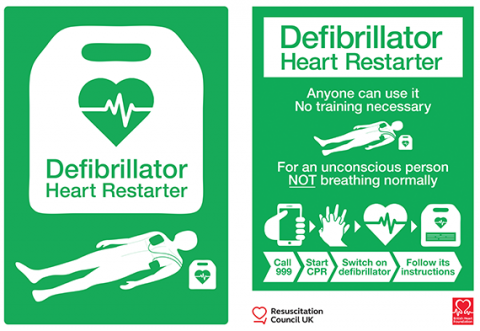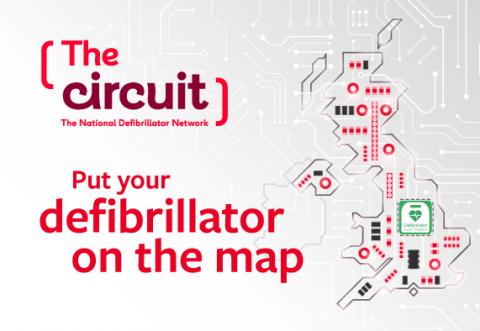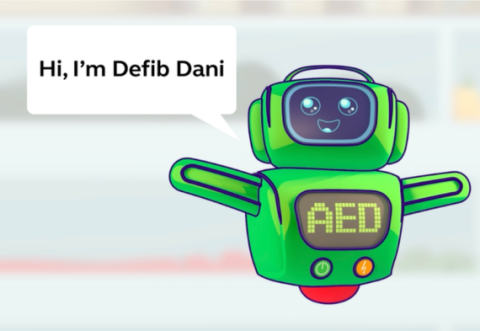The heart is controlled by an electrical impulse that makes it beat in a regular rhythm, keeping you alive. When a person has a sudden cardiac arrest (SCA), the normal rhythm becomes disrupted and disorganised, which means their heart can’t beat properly and they won’t be able to breathe normally.
For every minute that someone’s in cardiac arrest without receiving CPR and having a defibrillator used on them, their chance of survival decreases by 10%. That’s why it’s so important to act immediately.
A defibrillator gives a jolt of energy to the heart, which can help restore the heart’s rhythm, and get it beating normally again. This simple piece of equipment is easy to use and doesn’t require training, but it could make the difference between life and death – so it’s important to find and use a defibrillator in an emergency.
You might also hear a defibrillator be called a defib, an AED (Automated External Defibrillator) or a PAD (Public Access Defibrillator).
Don’t be scared – it’s simple!
Public access defibrillators are designed to be used by the public. When you switch the defibrillator on, it will provide clear instructions and talk you through what you need to do.
A defibrillator will not harm the person suffering a cardiac arrest and will only give them a shock if and when it is needed. There's no reason to feel nervous about using a defibrillator - just follow its simple instructions, and know that using it could save someone's life.
Where is your nearest defibrillator?
If you see someone suffering a cardiac arrest, ring 999 and ask for an ambulance. The ambulance call handler will guide you through how to perform CPR, and they will also tell you where your nearest defibrillator is.
Defibrillators are popping up across communities in the UK. They might be on the outside of buildings or inside large public spaces such as shopping centres and airports. The defibrillator or the case it sits in may say ‘AED’ or ‘defibrillator’ and may have an image of a green heart on the outside. You might also see a green informational poster next to a defibrillator, which we developed with the BHF to raise awareness of the location of defibs.
There are also other initiatives to make sure we can all find our nearest defibs quickly in an emergency. One example is The Circuit, which is a drive by the BHF with support from Resuscitation Council UK to create a network of defibrillators that are registered with ambulance services, ensuring the public can locate their nearest defibrillator. There’s also GoodSAM, which has mapped thousands of public access defibrillators across London.
Spark a change in your community
It’s vital that members of the public can quickly access defibrillators in an emergency. If you are interested in getting a defibrillator installed in your local area, read our AED guide which provides useful information on how to fund a defibrillator, where to install one and how to maintain them after installation.
Template letter for defibrillator guardians
At present, there is an alarming inconsistency in the insurance industry’s approach when offering cover for ‘Rescue Ready’ cabinets in community settings. This is threatening many lives across the United Kingdom.
RCUK has produced a template letter for guardians of defibrillators, to request that their insurance company provides cover for unlocked, ‘Rescue Ready’ cabinets containing automated external defibrillators (AEDs).
As guardian of a defibrillator, we recognise you are responsible for ensuring your device remains in a ready to rescue state at all times. Devices located within a community setting play a crucial role in shortening the time ‘from collapse to first shock’ for the general public.
Please consider using this template letter to insurance companies, which references the consensus statement written by the Resuscitation Council UK, and supported by the British Heart Foundation, on the importance of unlocked cabinets in saving lives.




